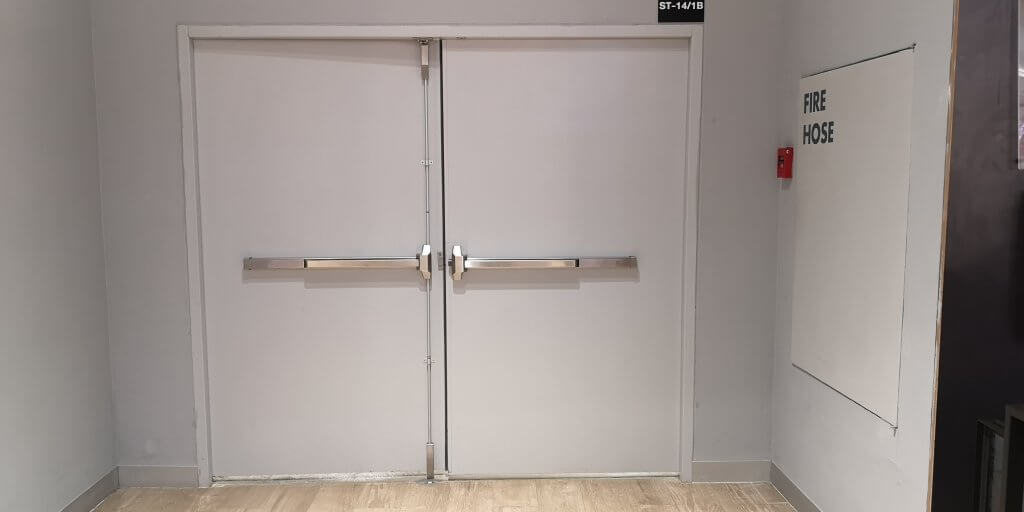
Panic bars are simple, but potentially life-saving devices that are intended to allow for rapid exit from a building or room in the event of an emergency. These devices replace traditional door knobs or handles and are always placed on the interior side of an outswing exit door.
While panic bars are a great safety feature in their own right, they may also be legally required for your facility, depending on the way that your building is classified.
Let’s take a closer look at what constitutes a panic bar and address some common misconceptions about these handy devices.
Chances are that you may have heard the terms “panic bar” and “exit bar” used interchangeably. These two items are not the same. While mixing up the two is a common mistake, it could create a serious safety hazard or results in fines or failed safety inspections if you fail to install the right kind of hardware, depending on your local and state requirements. In fact, it is often easier to simply opt for the panic bar. People do this to avoid any potential code enforcement issues in the future.
A panic bar is a spring-loaded metal device that is mounted horizontally to a door. Pressing the metal bar unlatches the door and allows for easier egress. Alternative names for a panic bar are “crash bar” and “panic device.”
The shape and style of panic bars can vary slightly, but most stick with a tried and true rectangular design.
Exit bars are similar in their basic design and are also only used on the inside of exterior, outswing doors. Some exit bars have a curved outward design and are mounted to the door at two points of contact. They are only approved for use in low-risk facilities with less stringent safety requirements and can be affixed with a locking device, such as a key or security code.
The most important reason for using a panic bar on the doors in your facility is for the safety of your building’s occupants. Crowding at congested exits has been shown to increase the risk of injury during fires and other emergencies that require rapid evacuation.
In addition, high-stress situations cause a reduction in fine motor skills. This could make it difficult for an employee to enter a security code in the event of an emergency.
A panic bar makes things easier for people who are looking to exit the building quickly. Employees can simply press the large bar to open the door and get to a place of safety. When dealing with any emergency, every second counts.
In addition to being a great safety feature, you should incorporate panic bars into your exit doors in cases in which they are legally required. According to the latest International Building Code (2018), it is required that facilities that have a classification of “high hazard,” “Education,” or “Assembly” have panic bars installed. They also require that buildings that have an occupancy of 50 or more people have bars on their egress doors.
The IBC may not fully apply to your region or jurisdiction, but other governing bodies, such as OSHA, may. Generally, any educational or high-hazard facility will be required to have panic bars. One of the best ways to check is to verify compliance with local code enforcement office.
Consider incorporating grab bars for any business. Panic bars are affordable and easy to install,
CDF Distributors offers top-quality panic bars and egress doors at unbeatable prices for your facility. We offer fire-rated and standard options in a variety of finishes to match any style. Contact us today!
March 15, 2021
Wayne Foreman